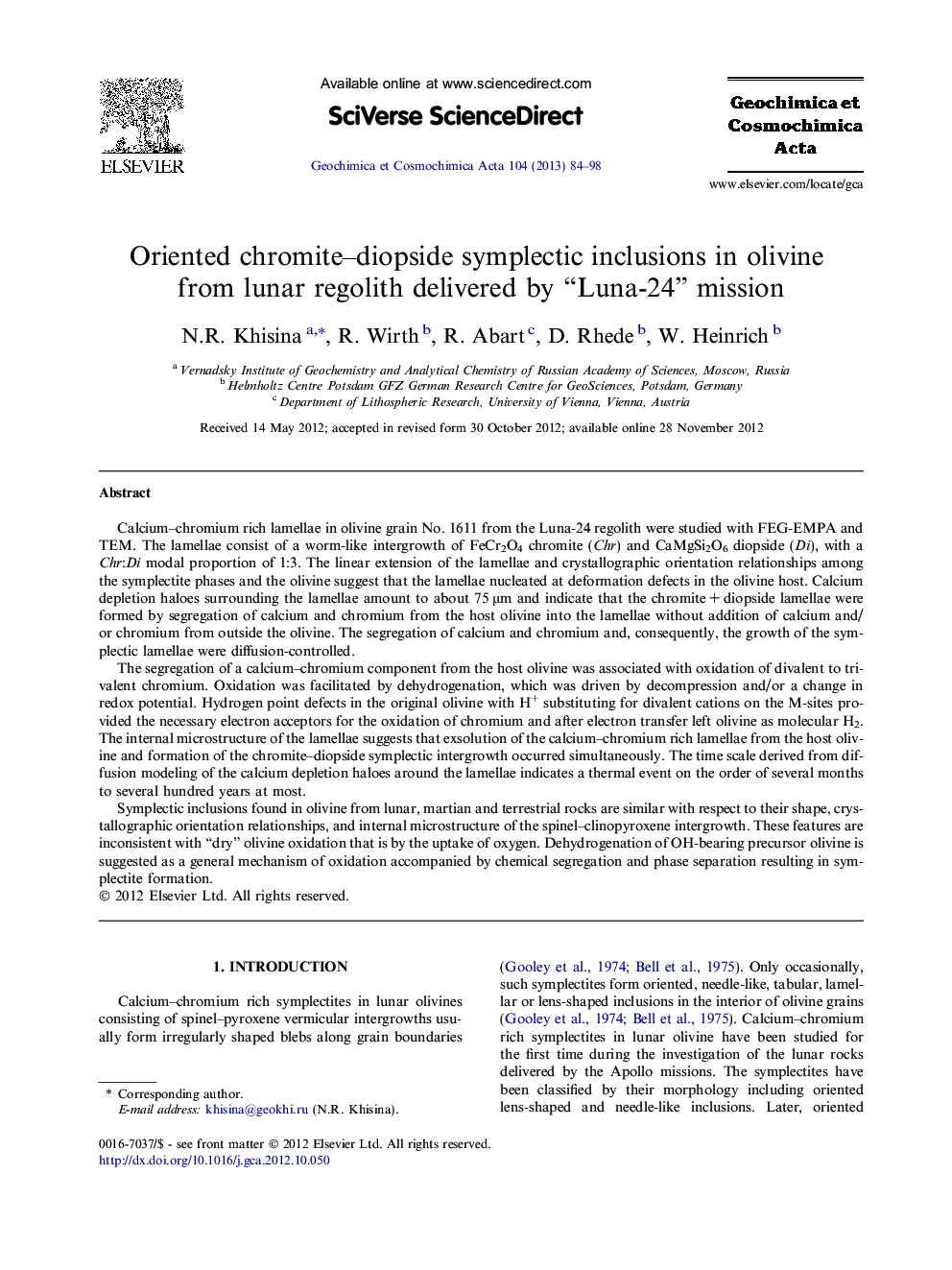| Article ID | Journal | Published Year | Pages | File Type |
|---|---|---|---|---|
| 4702591 | Geochimica et Cosmochimica Acta | 2013 | 15 Pages |
Calcium–chromium rich lamellae in olivine grain No. 1611 from the Luna-24 regolith were studied with FEG-EMPA and TEM. The lamellae consist of a worm-like intergrowth of FeCr2O4 chromite (Chr) and CaMgSi2O6 diopside (Di), with a Chr:Di modal proportion of 1:3. The linear extension of the lamellae and crystallographic orientation relationships among the symplectite phases and the olivine suggest that the lamellae nucleated at deformation defects in the olivine host. Calcium depletion haloes surrounding the lamellae amount to about 75 μm and indicate that the chromite + diopside lamellae were formed by segregation of calcium and chromium from the host olivine into the lamellae without addition of calcium and/or chromium from outside the olivine. The segregation of calcium and chromium and, consequently, the growth of the symplectic lamellae were diffusion-controlled.The segregation of a calcium–chromium component from the host olivine was associated with oxidation of divalent to trivalent chromium. Oxidation was facilitated by dehydrogenation, which was driven by decompression and/or a change in redox potential. Hydrogen point defects in the original olivine with H+ substituting for divalent cations on the M-sites provided the necessary electron acceptors for the oxidation of chromium and after electron transfer left olivine as molecular H2. The internal microstructure of the lamellae suggests that exsolution of the calcium–chromium rich lamellae from the host olivine and formation of the chromite–diopside symplectic intergrowth occurred simultaneously. The time scale derived from diffusion modeling of the calcium depletion haloes around the lamellae indicates a thermal event on the order of several months to several hundred years at most.Symplectic inclusions found in olivine from lunar, martian and terrestrial rocks are similar with respect to their shape, crystallographic orientation relationships, and internal microstructure of the spinel–clinopyroxene intergrowth. These features are inconsistent with “dry” olivine oxidation that is by the uptake of oxygen. Dehydrogenation of OH-bearing precursor olivine is suggested as a general mechanism of oxidation accompanied by chemical segregation and phase separation resulting in symplectite formation.
